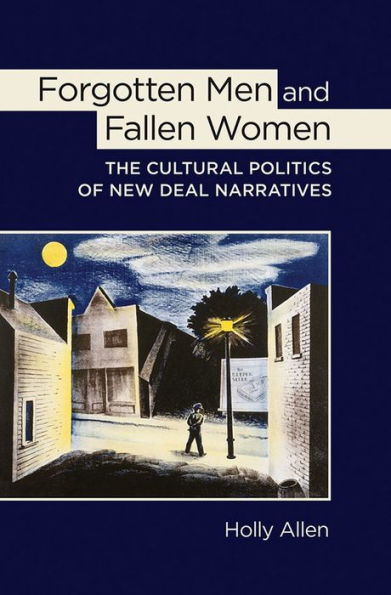These stories, she argues, had practical consequences for federal relief politics. The forgotten man, identified by Roosevelt in a fireside chat in 1932, for instance, was a compelling figure of collective civic identity and the counterpart to the white, male breadwinner who was the prime beneficiary of New Deal relief programs. He was also associated with women who were blamed either for not supporting their husbands and family at all (owing to laziness, shrewishness, or infidelity) or for supporting them too well by taking their husbands’ jobs, rather than staying at home and allowing the men to work.
During World War II, Allen finds, federal policies and programs continued to be shaped by specific gendered stories—most centrally, the story of the heroic white civilian defender, which animated the Office of Civilian Defense, and the story of the sacrificial Nisei (Japanese-American) soldier, which was used by the War Relocation Authority. The Roosevelt administration’s engagement with such widely circulating narratives, Allen concludes, highlights the affective dimensions of U.S. citizenship and state formation.
These stories, she argues, had practical consequences for federal relief politics. The forgotten man, identified by Roosevelt in a fireside chat in 1932, for instance, was a compelling figure of collective civic identity and the counterpart to the white, male breadwinner who was the prime beneficiary of New Deal relief programs. He was also associated with women who were blamed either for not supporting their husbands and family at all (owing to laziness, shrewishness, or infidelity) or for supporting them too well by taking their husbands’ jobs, rather than staying at home and allowing the men to work.
During World War II, Allen finds, federal policies and programs continued to be shaped by specific gendered stories—most centrally, the story of the heroic white civilian defender, which animated the Office of Civilian Defense, and the story of the sacrificial Nisei (Japanese-American) soldier, which was used by the War Relocation Authority. The Roosevelt administration’s engagement with such widely circulating narratives, Allen concludes, highlights the affective dimensions of U.S. citizenship and state formation.

Forgotten Men and Fallen Women: The Cultural Politics of New Deal Narratives
272
Forgotten Men and Fallen Women: The Cultural Politics of New Deal Narratives
272Hardcover(New Edition)

Product Details
| ISBN-13: | 9780801453571 |
|---|---|
| Publisher: | Cornell University Press |
| Publication date: | 04/03/2015 |
| Edition description: | New Edition |
| Pages: | 272 |
| Product dimensions: | 6.40(w) x 9.30(h) x 1.00(d) |
| Age Range: | 18 Years |
